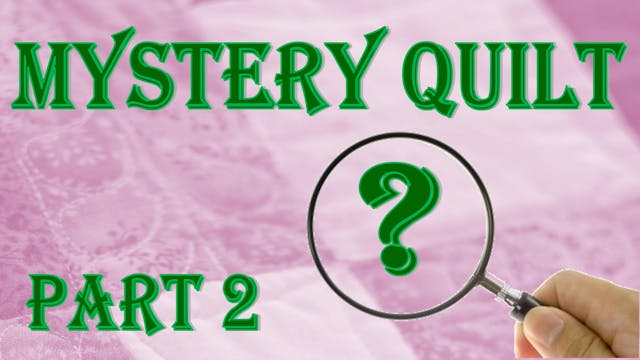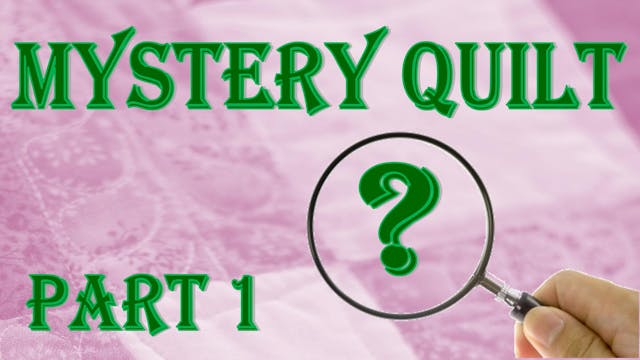Tulip Log Cabin patchwork with Valerie Nesbitt
Classes with Valerie Nesbitt • Educational, G, 26-Mar-2021
Valerie guides you through the various parts of this delightful design. You could easily use up several scraps of fabric to create a wide variety of tulip colours. The pattern uses 12 tulip blocks to create a quilt approximate 45″x55″ but it is very easy to make a larger quilt – just make more blocks (plus a few more setting triangles).
This is the little quilt Valerie started with just 6 tulips.
Yardage, Jelly Roll or Scrap
The quilt was designed to use 2 ½” strips for the tulip logs and 2 ½” squares with the stitch/n/flip sewing method, so you could use up your jelly roll. You will need other fabric, though for the alternative plain block. This could also see you working with a partial seam technique, although not essential. The setting triangles teach you about the grain of the fabric and move you into sewing rows on the diagonal.
Think about the Grain
Why Quarter Square Triangles Matter from Dawn Cameron-Dick is also worth a view by clicking here.
Add a flash of colour
To learn more about flat piping you can click here.
The full pattern is available in the workshop notes as a pdf download for subscribed members.
Tulip Log Cabin Quilt pattern by Valerie Nesbitt is also available on our website.
Click here for Workshop Notes
Click here to learn more about Valerie Nesbitt.
Click here to watch a preview of this premium video
Up Next in Classes with Valerie Nesbitt
-
Mystery Quilt - Part 2
The mystery continues. Here are some more parts for you to make.
-
Mystery Quilt - Part 1
This specially designed quilt by Valerie Nesbitt uses 2 ½” strips with no particular light/medium or dark significance. They just need to blend together.
If you are using pre-cuts, then Valerie guides you through the seam allowance even when the strips come with pinked/crinkly edges. It uses a...
-
Sashing Your Quilt with Valerie Nesbitt
Valerie shows you a number of quilts and designs which will hopefully inspire and inform you.
Lots of quilts use sashing. Traditional sampler quilts have their blocks separated by sashing. Simple quick quilts can have the squares separated by sashing. The sashing can have cornerstones or not. For...



